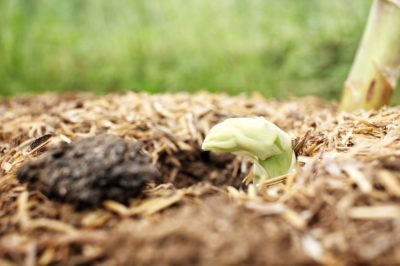Choosing a Site for an Asparagus Bed
When choosing a site for asparagus:
- Choose a spot with full-sun or a minimum of 8 hours direct sunlight.
- Choose a site where water drains out of a 1 cubic foot (.03 cubic meters) hole at a rate of 1 to 4 inches (2.5 to 10 cm) per hour.
- If soil does not drain well, build a raised bed approximately 16 inches (40 cm) high and fill it with sandy-loam soil.
- Choose a site where the shade of the mature, up to 6 foot (1.8 meters) tall asparagus plants will not affect other nearby plants. You can also use the shade of asparagus to protect plants tolerant of or requiring shade in the summer.
- Locate your asparagus bed near a source of water.
- Give each asparagus crown you are planting approximately 2 square feet (.18 square meters) of area, including a 3 to 4 feet (.9 to 1.2 meters) space between rows.
Preparing a Bed for an Asparagus Planting
Preparing an area for asparagus well in advance helps ensure a great harvest for many years after the plants reach maturity in three years. If possible, grow a soil-building cover crop containing a mix of legumes such as peas and vetch and grasses like oats, planting it in the fall before planting the asparagus crowns. Cut the cover crop in the spring and turn the residue into the soil to add nitrogen, organic matter, and to improve soil texture.
If your soil drains adequately and you are planting directly in the ground, dig down and loosen the soil to a depth of 12 to 16 inches (30 to 40cm), adding organic matter such as leaf mold, compost, or decomposed manure and mixing it with the native soil.
Dig trenches 6 to 8 inches (15 to 20cm) deep and 3 to 4 feet (.9 to 1.2 meters) apart and add a band of fertilizer, mixing it into the soil at the bottom of the trench. Place crowns on a mound of soil in the trench, spacing them 12 to 16 inches (30 to 40cm) apart in the rows. Cover with soil and keep well-watered.
Plants started from crowns must grow until the third year before any shoots are harvested.
